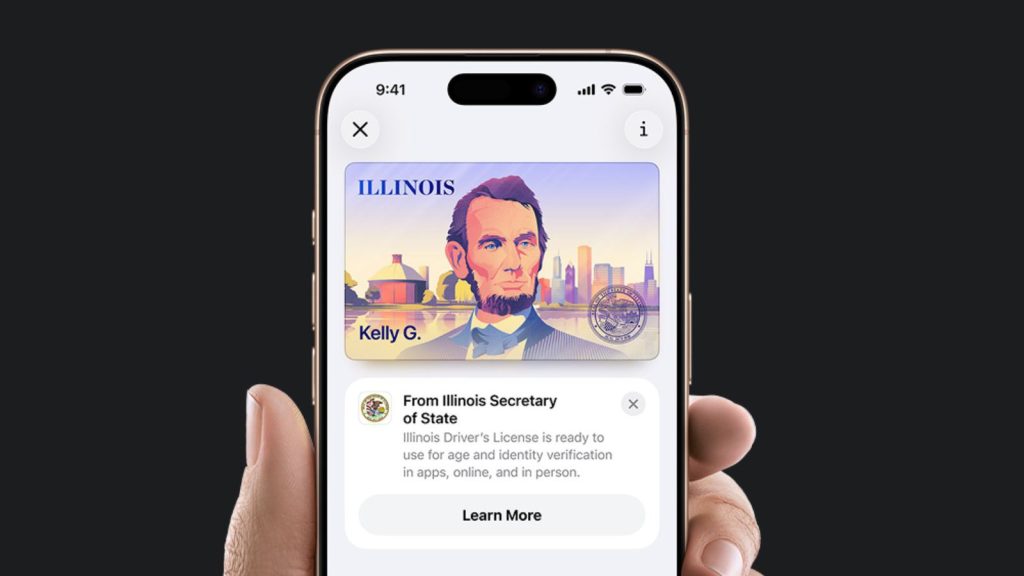Illinois residents can now store their state identification cards and driver’s licenses in Apple Wallet, with the feature officially going live this week according to MacRumors. The rollout makes Illinois the latest state to adopt Apple’s digital ID system, enabling iPhone and Apple Watch owners to use a secure mobile version of their state ID at participating checkpoints.
The digital ID is supported on devices running current versions of iOS and watchOS, and it uses the same encrypted, device-specific security architecture that underpins Apple Wallet’s payment credentials and transit passes. Illinois is joining a list of states that have gradually moved toward mobile forms of identification as agencies modernize verification systems.
How It Works for Illinois Residents
Residents can add their Illinois ID by opening the Wallet app, selecting “Add to Wallet,” and scanning their physical ID to complete verification. The Illinois Secretary of State’s office and relevant technology agencies collaborated with Apple to validate the identity-matching process, which includes facial recognition checks through the Secure Enclave.
Once stored, the digital ID can be presented by tapping an iPhone or Apple Watch at supported TSA checkpoints and other approved verification terminals. As with digital IDs in other regions, the system works by transmitting only the requested information — such as age or identity confirmation — rather than exposing the full ID card. The device must be unlocked using Face ID or Touch ID to authorize any transfer.
A Gradual National Expansion
Apple introduced digital IDs in 2021, beginning with select airport checkpoints in Arizona and Georgia. Since then, expansion has been slow but steady, largely dependent on state-level adoption and integration with federal verification systems. Illinois represents one of the most significant additions this year, extending access to a large population with high commuter traffic.
State officials have framed the rollout as part of a broader modernization initiative, reflecting ongoing moves toward smartphone-based authentication across government services and transportation hubs. Adoption ultimately depends on where digital ID readers are deployed, but initial implementations typically start with airport security lanes before expanding to local institutions.
Security and Privacy Protocols
Apple’s approach ensures that ID data is stored only on the device, never uploaded to Apple’s servers. Verification terminals request only the fields necessary for a specific interaction, reducing unnecessary exposure of personal data. Illinois’ implementation follows the same model used in other participating states.
Officials emphasize that the digital ID does not replace the physical card, which residents must still carry where mobile ID support is unavailable. For now, the feature serves as a convenient supplementary option at compatible locations.
What’s Next
With Illinois now officially live, additional states are expected to continue evaluating Apple Wallet integration as part of broader digital-identity strategies. The success of implementations to date may influence how quickly transportation authorities, government agencies and private institutions adopt mobile ID verification in the coming years.
